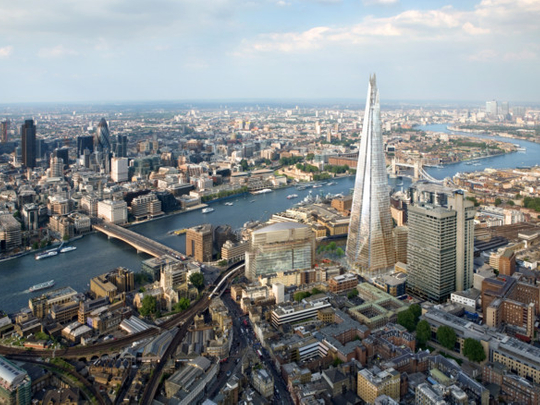
Dubai: Not all investors in the UAE are chasing bargains on off-plan property in Dubai — some are instead heading off to London for options there. And the lucky ones have already landed a few good deals.
“Typically, the Gulf buyers are hoping to capitalise before London home prices start to rise at some point.”
Emirati investors pumped in Dh15 billion on all sorts of property in Dubai in the first six months, according to recently released Dubai Land Department stats. They were followed by Saudi nationals, with Dh4 billion worth of commitments. In doing so, the Saudis usurped the position Qataris used to have before the current political crisis erupted.
But for a certain type of Gulf based investor, cutting across nationalities, London still has a place in their preferences. But the sort of currency benefits they could make use of in the second-half of 2016 is no longer there. At least not to the same extent.
Brexit
According to Durrani, as opposed to the 17 per cent drop the pound experienced in the period after the Brexit vote mid-2016, in the year to June that gap has closed to 11 per cent.
“The Brexit related opportunity is slowly starting to fade and this may explain why many UAE/Gulf buyers came into the market now,” said Durrani.
And unlike in the past, the current crop of investors are not waiting around for trophy purchases in the key central London boroughs of Westminster, Kensington and Chelsea. The outskirts are just fine, provided the ticket price is right. Around 30,000 new homes were added outside of central London in the last three years. And they don’t come with fancy price tags either.
Which sort of explains the £800,000 to £3 million average as opposed to the £5 million and much more made on acquisitions in the peak years between 2010-14.
And there are plenty of new supply to choose from. In its latest update on the state of London’s property market, Cluttons reports that total project completions by end of 2016 were up 38 per cent year-on-year, and bringing “close to 25,000 units” into the London residential market last year. An additional 11,439 units were completed in the first six months this year.
“However, a striking 10 per cent of this stock remains unsold; a sharp increase from the circa 1 per cent at the end of 2014,” the report notes.
Incentives
So, if post-Eid saw a spike in UAE and Gulf investors wanting to see what bargains they could get on a London investment, they wouldn’t have been disappointed. Some of the developers are offering incentives on stamp duty by offering to cover these charges by adjusting asking prices accordingly.
Even now, Gulf based investors — and those from the wider Middle East — are making it count. Chinese and other Southeast Asian buyers account for 30-40 per cent of the international buyers who find a home in London, while the share of those from this region would be 10-15 per cent.
Factbox: Even warehouses are just fine
Middle East investors getting into the UK realty market now are not necessarily buying up homes alone. They are quite fine with a warehouse, and especially if it is one operated by Amazon.
“That was a major deal from recent weeks, and this was for a warehouse situated outside Edinburgh,” said Faisal Durrani at Cluttons. “It signals investors interest in property assets that could benefit from eCommerce growth. And this particular warehouse accounts for three out of every eight deliveries made by Amazon in the UK.











